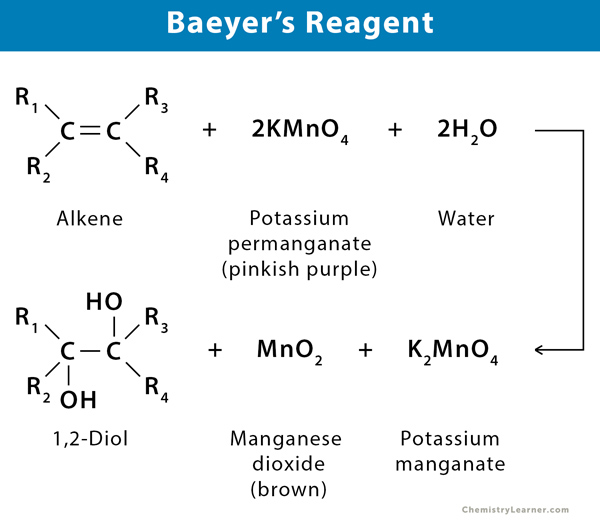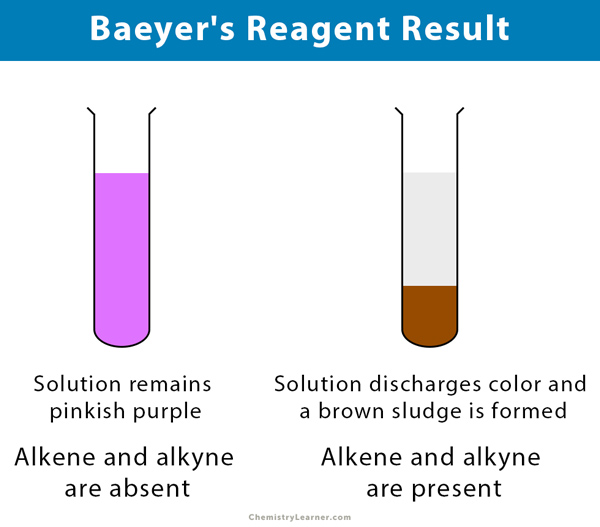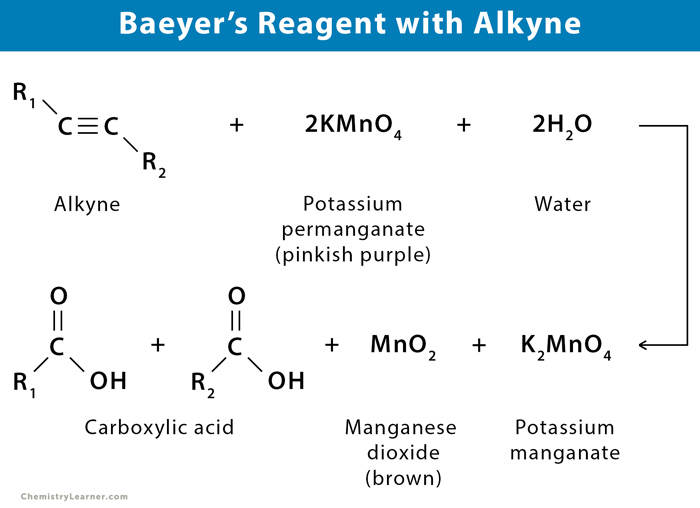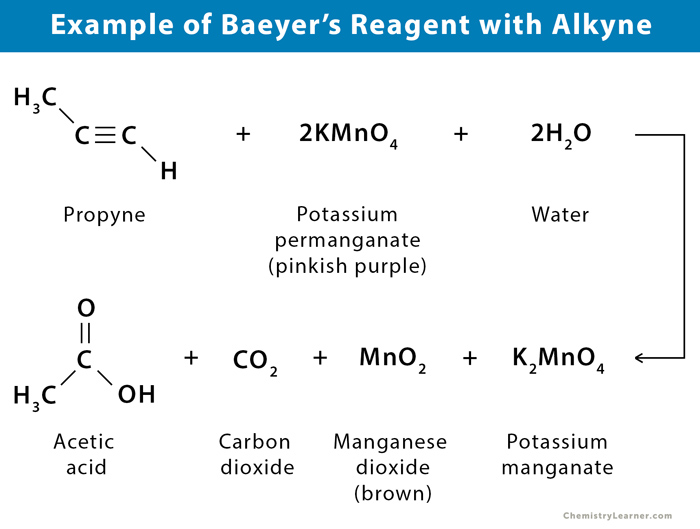Baeyer’s Reagent
Definition: What is Baeyer’s Reagent?
Baeyer’s reagent is an alkaline solution of cold potassium permanganate (KMnO4). It is a potent oxidizing agent and is used in qualitative organic analysis to test for the presence of unsaturation. This solution interacts with an unsaturated compound (e.g., alkene or alkyne), changing its pinkish-purple color to brown. The alkene is oxidized to 1,2-diol, while the permanganate is reduced to manganese dioxide (MnO2). The reaction is significant because it does not work on alkanes or aromatic compounds, and hence, can be used to distinguish them from alkenes and alkynes.

The reagent is named after German organic chemist and Nobel Laurate Adolf Von Baeyer.
Preparation of Baeyer’s Reagent
- Dissolve 1 gram of solid KMnO4 in 100 ml of distilled water to produce a 1% potassium permanganate solution
- Add 10 grams of anhydrous sodium carbonate (Na2CO3) and the stoppered bottle is shaken until fully dissolved
- Keep the solution in a dark, cool cupboard when not in use to maintain it fresh
The equivalent weight of Baeyer’s reagent is 52.6.
Example of Baeyer’s Reagent Reaction
When purple color Baeyer’s reagent is added to ethylene, it obtained a colorless solution of ethylene glycol.
Baeyer’s Reagent with Alkyne
Baeyer’s reagent reacts with an alkyne to give carboxylic acid. The triple bond is cleaved, and the carbon involved in the bond gives COOH resulting in respective carboxylic acids.
Applications of Baeyer’s Reagent
- Medical uses
- Water treatment
- Synthesis of organic compounds
- Analytical use
- Fruit preservation
- Survival kits
- Fire service
References









some spellings and representations are wrong. Please correct those
Thank you for your comment. We have made the corrections.
its better but no video
We do not include video unless it can explain the concept better than than the article
Why doesn’t the reaction with alkene complete the oxidation and give acid as well?
thank you
It is because the reaction conditions are not strong enough to break the carbon-carbon bond and oxidize the diol completely to carboxylic acids.